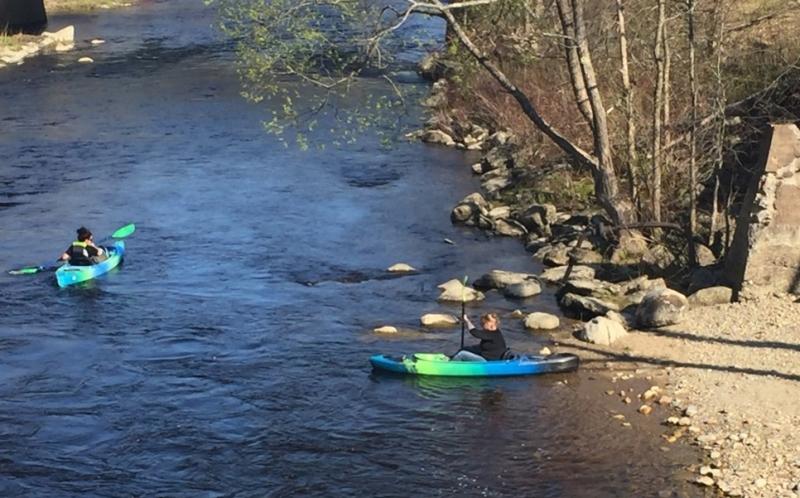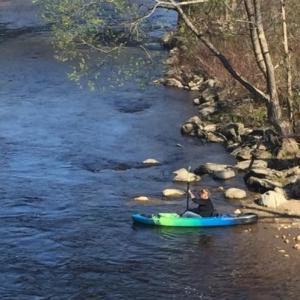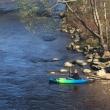Head Tide Dam update
Recently, partners from Midcoast Conservancy, the Town of Alna, Atlantic Salmon Federation (ASF) and The Nature Conservancy (TNC) met onsite at Head Tide Dam.
“We have had many inquiries about the alewife return this year: ‘Are they here yet?’ ‘Have you seen any fish?’” says Midcoast Conservancy’s Senior Watershed Restoration Manager Shri Verrill.
“We haven’t seen any fish, which means the Head Tide project was successful”, says ASF Vice President Andy Goode, who was looking for alewives with help from his son Ansel. They didn’t see any alewives at Coopers Mills where the dam was removed in 2018 but reported large numbers higher up in the watershed indicating alewives were readily reaching their spawning grounds.
There are often two or more other cars parked at the Head Tide site so it is clearly a popular spot for people to connect and enjoy the river. A trail camera has been installed to get a sense of how many people are accessing the viewing platform or beach. This will help with planning for recreation activities. It is also the hope that the community will pay attention to activity around the dam and be vigilant in the spirit of being good stewards of the common.
Plans are underway to move boulders to create another parking spot, increase safety, stabilize the lower steps and stabilize the containing wall on the beach, as well as to complete the final railing installation on the lower steps.
“It’s always an exciting time of year to be river-side while many fish like river herring are returning in their annual migration upstream to spawn. It was fun to watch my daughter squish her toes in the soft mud upstream of the dam and get as much joy from being near the water as I do. This is a favorite family spot and we will definitely be back soon,” says Molly Payne Wynne, Senior Freshwater Scientist of The Nature Conservancy Maine Chapter.
Verrill and Goode had plans to meet and install the camera that day; synchronicity facilitated the visit with Payne Wynne. Proper physical distancing and disinfecting of the equipment, practices suggested by the Maine CDC, were observed, of course.
Verrill and Payne Wynne took advantage of the surprise meeting to relax on the beach and discuss collaborative strategies for a regional citizen science smelt survey next spring and ongoing climate adaptation planning, while Clara made free mud pies and inspected the freshwater mussels in the shallow water.
With so much hardship surfacing during the n-COVID19 pandemic, the intergenerational interaction that resulted from Goodes’s and Payne Wynne’s homeschooling combined with fieldwork as conservation scientists and restoration practitioners goes to show that the staff at local land trust and conservation organizations are people with families too!
“Being outside discussing next steps to our watershed scale restoration initiative with a little one running around just makes it seem like all is right in the world. I’m so grateful to work for an organization that truly values community, land, and water as integral parts of our mission. Same river, same trail, same beach…we are in this together and stronger for it”, Verrill reflects.
For more information on places anyone can enjoy the migration season, check out the Maine River’s alewife trail map https://mainerivers.org/wp-content/uploads/2020/04/2020-maine-alewife-trail-WEB.pdf
Event Date
Address
United States

























